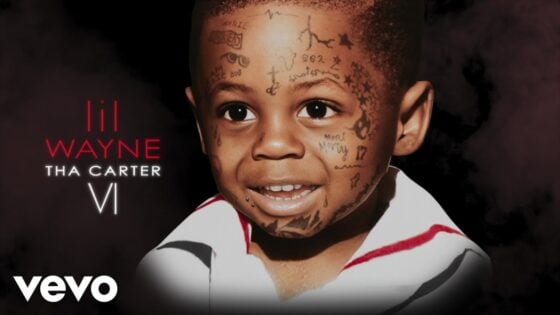Sometimes with adaptations, the story you put in ain’t what comes back. While hardly anyone’s idea of a masterpiece, 1989’s Pet Semetary was at least a fairly faithful and spooky translation from book to screen (Stephen King himself wrote the screenplay). Unfortunately, 2019’s version takes some different paths through the woods, and those choices result in a shallow, lifeless husk that strips away the source’s haunting themes about grief and fear of death in favor of cheap jump scares. This mediocre handling of the intriguing source material may be passable enough for the casual moviegoers, but genre fans will recognize a soulless creature simply going through the horror motions.
The story starts off familiarly with Doctor Louis Creed and his family moving from Boston to a country home in rural Maine in order to escape emotional stress from their big-city lives. Situated among the many acres they now own is a small cemetery, where local children sometimes make a ritual out of burying their deceased pets. After its discovery and the death of his daughter’s pet cat, Church, Louis (a wooden Jason Clarke) is escorted by his neighbor, Jud (John Lithgow having fun as an old-timer), to a burial ground even deeper in the woods. The reason? Because whatever goes into that earth becomes resurrected — though perhaps not exactly as it once was. If you don’t already know what happens next, you at least get the idea; tragedy strikes, and soon is Louis considering a return trip.
Those who have seen that original version of Pet Semetary (or read King’s novel) will have a sense of what to expect for the most part, but this new script (written by Jeff Buhler) does its best to throw a few curveballs into the mix, even playing with expectations, albeit in meaningless ways. However, in trying to bait-and-switch the audience, subplots have been sacrificed that rob the story of much of its deeper poignancy, and even smaller touches that added much-needed flavor have fallen by the wayside. Most notably absent is a bit of oral history which contributed context to the mystical nature of the grounds, but also eerily foreshadowed what unnatural actions were to come. Another thread taking a hit is Louis’ wife’s childhood relationship with her bedridden sister, who suffered from spinal meningitis. Though still present, the emotional core of Rachel’s recollection has now been largely gutted and replaced with a more milquetoast portrayal of guilt that ultimately proves unsatisfying.
Any film should be evaluated on its own terms, but much of what makes 2019’s Pet Semetary feel so empty can be explained in those types of comparisons. Whereas the original kept in tidbits like the subtly rotting smell emanating from the revived, here the signs that something is amiss are plainly visible — are the perpetually mangy fur, veined skin, and droopy eyelids not warning enough to these people? Perhaps common sense could be ignored if the apparently blinding grief was palpable, but little time is spent laying the foundation for later stupid decisions. Cursory lines about beliefs (or non) in the afterlife are tacked on in place of full-fledged conversations, almost as if forgetting that there are supposed to be real feelings and motivations that drive these characters. We never really learn much about who these people are, where they come from, and as such, the lasting horror can never take root.
Still, audiences looking for an excuse to jump out of their seats could do worse. Directors Kevin Kölsch and Dennis Widmyer have got the jump scare down to a science, and certainly aren’t shy about showing off. And while the fairly basic images they create don’t tend to stick in one’s brain, there is an appealing slickness to much of the film’s look, especially those portions shot in the cemetery itself. These visuals are unlikely to give anyone nightmares, but they do deliver enough momentary atmosphere to keep viewers engaged. Unfortunately, if what’s on screen doesn’t quite elicit the heebie-jeebies, then a constantly signalling musical score never forgets to remind audiences that ominous things are happening all the time. Had certain scenes been allowed to play out without this aural assistance, perhaps just letting the actors do their thing, Pet Semetary might have achieved even creepier vibes.
John Lithgow’s performance is particularly magnetic, and makes those around him much more interesting. Though Jason Clarke can’t seem to find the right center for a man internalizing his own conflict with death, he — and everyone else — plays well with Lithgow, who finds connections not only to each character, but serves as an uneasy guide between worlds. Jud seems most comfortable in the woods — the space between human civilization’s cheerful birthday parties, cheap funeral suits, and decorative bedroom pillows, and the nether realm’s dark power, menacing mist, and howling “loons.” Beneath that scraggly beard and a trustworthy flannel shirt is the gateway linking modern and ancient, filled with historical knowledge and insightful perspective. It’s a great role that isn’t quite exploited for everything it could be (for that, see Fred Gwynne’s take), but lends at least a little mystical weight to the proceedings.
Regardless, none of the actors can completely salvage the miscalculations made by a script that cares more about by-the-book horror beats than psychologically meaningful and lasting scares. Pet Semetary isn’t pure demon seed risen from the grave, but it’s not quite human either. If this pale imitation of the source material is the best that could be dug up, than maybe dead would have been better.


































Mike Worby
April 7, 2019 at 10:42 pm
I was so choked that they cut out the scene about the one human resurrection done in the past. My favorite part of the original.
Patrick Murphy
April 8, 2019 at 7:32 pm
Right? Not only is that little side story ripe with creepy potential, but it allows for great foreshadowing that ups the tension for later scenes. Bizarre to not include it.